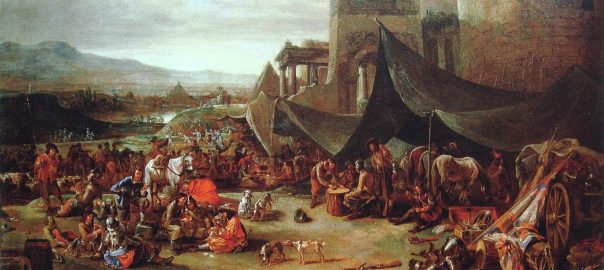In today’s listings, which cover 1527 CE, we’ll look primarily at the events swirling across the “Western” world’s European heartland since if we can’t understand those we can’t understand the explosion of European-origined power projection, plunder, looting, and land-grabbing on a global scale that was already well underway in 1527 and continued for 400-plus years thereafter. In some ways (but not all), the one looked like a mirror of the other.
In undertaking this project– which started out as a simple daily exercise to get my writing muscles back into shape– I’ve realized the extreme limitations that my own (British) education placed on my ability to understand the world. One thing I never saw the need to understand was the role of that thing called the “Holy Roman Empire.” In the 1526 post here, I’d called Spain’s King Charles, aka the Holy Roman Emperor, the “big kahuna in Catholic governance”, as opposed to the much weaker pope… So here’s what happened in 1527:
- On May 26, mutinous troops of Charles V, the Holy Roman Emperor (who was also King Charles I of Spain) carried out the Sack of Rome, which was then part of the Papal States. The largely Protestant German Landsknechts, mutinying over unpaid wages as well as Spanish soldiers & Italian mercenaries, entered the city of Rome, defeated the vastly outnumbered defenders and looted the city. The Pope, Clement VII fled and took refuge in Castel Sant’ Angelo after his “Swiss Guard” were annihilated. The sackers were described as “mutineers”; but happily for Charles, the sack of Rome debilitated the League of Cognac, the alliance that the papacy and several other states had earlier formed against him. (The painting of the Sack of Rome shown above is by the 17th century painter Jonannes Lingelbach.)
- Protestantism, which rejected the need for papal/priestly intermediation between the individual believer and the Almighty and emphasized the need for vernacular translations of the Bible so all believers could read it, was spreading rapidly throughout the continent! Just months after the first translation of the New Testament into Swedish, on June 17 the Swedish Riksdag adopted Lutheranism as the state religion, in place of Roman Catholicism. That resulted in the confiscation of church property and the dissolution of Catholic convents in Sweden.
- Also on June 17, Spain sent out a naval expedition to conquer Florida. And at some point during 1527, the Spanish conquistadores in Central America completed their conquest of the Guatemalan highlands and established the area’s first settler-city, Ciudad Vieja.
- On August 20, 60 representatives of Anabaptist groups came together in the “Martyrs’ Synod” in Augsburg, Germany. Anabaptism was (and remains) a radical form of Protestantism that takes the New Testament and its antiwar teachings quite seriously. (Today’s offshoots are Mennonites, Amish, Church of the brethren, etc.) The Synod took place as persecution of the Anabaptists began to escalate throughout Switzerland, Germany and Austria. It later became known as the Martyrs’ Synod because most participants were killed for their faith soon afterwards.
During 1527, Niccolò Machiavelli died and the great Flemish cartographer Abraham Ortelius was born.
